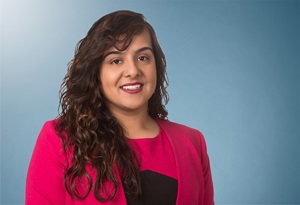DEA Telemedicine Listening Sessions: Recap and Observations
At a Glance
- The vast majority of the session’s 55 speakers spoke specifically about their experience treating substance use disorder (SUD), attention-deficit hyperactivity disorder (ADHD) and other behavioral health conditions.
- The value of telehealth in addressing access issues can only be captured with the ability to practice across state lines.
- Pharmacists and pharmacist organizations — as well as prescribers — pointed out that the earlier DEA proposed rules did not contemplate impact on pharmacy.
- At the listening session, DEA said their planned next step is to issue new proposed rules in the fall with another comment period.
On September 12 and 13, 2023, the Drug Enforcement Administration (DEA) held all-day hybrid listening sessions to hear from stakeholders regarding how the agency should move forward on regulation of telemedicine prescribing of controlled substances. Your Faegre Drinker team attended and listened to the full two days, and we provide a recap and highlight observations here.
Background. The COVID-19 Public Health Emergency (PHE) loosened restrictions on telehealth prescribing of controlled substances. With the sunsetting of the PHE in spring 2023, the DEA released new proposed rules under the Ryan Haight Act, which received over 38,000 public comments. Following the public’s response, the DEA decided to temporarily maintain PHE flexibilities as they returned to the drawing board. The listening sessions were a step towards a new approach to telemedicine prescribing, possibly to include a Special Registration process as required by the original 2008 law. At the listening session, DEA said their planned next step is to issue new proposed rules in the fall with another comment period.
The Good. DEA clearly stated their commitment to writing new telehealth rules that take stakeholder feedback and patient access to care considerations into account and demonstrated this commitment through active listening and questions by the Administrator and a top official throughout the two days. The Bad. Proponents of telehealth expressed frustration that it has taken DEA 15 years since the original Ryan Haight Act was passed to get to this point of thoughtful rulemaking. And the Ugly. While there were many common themes and some consistency across stakeholder remarks, there will be no way for DEA to write rules that take everyone’s recommendations into account. Read on for more…
Who Commented?
Across the two days, there were 55 presenters with about half attending in person and half on live video. A number of presenters were individual clinicians at academic medical centers and clinics and local practices, including doctors, nurse practitioners and pharmacists. Clinicians represented the full range of types of practice — virtual-only, hybrid and brick-and-mortar; small and large; rural and urban; pediatric and adult. One commenter spoke solely as a patient advocate, and there was one commenter representing a state government (New York). Nonprofit think tanks RAND Corporation and Pew Charitable Trusts also spoke.
The D.C. alphabet soup of national trade associations representing groups of stakeholders who spoke included: Alliance for Connected Care, American Academy of Family Physicians (AAFP), American Academy of Hospice and Palliative Medicine (AAHPM), American Hospital Association (AHA), American Medical Association (AMA), American Society for Addiction Medicine (ASAM), American Society of Consultant Pharmacists (ASCP), American Telemedicine Association/ATA Action, Center for Telehealth and e-health Law (CTeL), National Association of Chain Drug Stores (NACDS), National Association of Community Health Centers (NACHC), and the National Pain Advocacy Center (NPAC).
Where Are the Lines in the Sand?
Taking a step back from the many nuances around prescribing controlled substances for different conditions, varying populations, and using different modalities, if you had to differentiate opposing sides on this topic, it would be whether commenters were “for” or “against” in-person requirements. The majority of hybrid practices — those that operate with both brick-and-mortar presence and via telehealth — joined with the virtual-only platforms in the message that telehealth is here to stay and should be allowed post-pandemic. However, a few clinicians expressed concerns about proliferation of medications online and did not believe telehealth was appropriate for the population they serve. Most commenters expressed an understanding for the need to balance preventing diversion with the need to expand access to care and were supportive of oversight from DEA without undue burdens or restrictions to providers and their practices.
Top Observations
- Safeguards. Among those in favor of removing in-person requirements for telemedicine prescribing, there were some frequently recommended safeguards against diversion: the special registration process itself including additional information that could be collected by the DEA in such a process, provider attestations of diversion and other safety controls, additional training requirements, required use of prescription drug monitoring programs (PDMPs) and e-prescribing, adherence to clinical standards set by clinical societies.
- Across state lines practice. The most commonly repeated theme among telehealth proponents willing to undergo a special registration process was that the corresponding value of registration to the provider should be the ability to practice across state lines with a single registration (but maintaining licenses in the states where they practice) and without a physical location in each state. The value of telehealth in addressing access issues (see observation six) can only be captured with the ability to practice across state lines.
- Treatments/conditions. The vast majority of speakers spoke specifically about their experience treating substance use disorder (SUD), attention-deficit hyperactivity disorder (ADHD) and other behavioral health conditions. Many speakers focused specifically on medication for opioid use disorder (MOUD) using buprenorphine and the urgent need to eliminate any barriers to this safe and effective treatment. Those focused on MOUD access often opposed the idea of a special registration process in favor of no restrictions, given the lack of success with the X-waiver registration that was removed last year. There was some debate in MOUD and more broadly about what clinically can be achieved via audio/visual technology versus audio-only versus in-person. A couple of speakers expressed concern about the ability to effectively treat people suffering from addiction virtually, including whether at-home drug screens can be effectively administered, but a number of speakers refuted those concerns. An important point was raised, though, that virtual-only providers should have systems in place to refer people who do need higher acuity or in-person care. With ADHD and other psychiatric conditions, it was discussed that an in-person visit is not always clinically necessary and, in fact, viewing a patient in their home environment may provide additional information to inform treatment that would not be obtained in an office setting. Concerns were raised around recent high-profile cases that the DEA is actively investigating in regard to potentially unscrupulous providers not following clinical best practices before prescribing. There was some discussion of business models and processes like contracting with insurance companies or obtaining prior authorization to mitigate this risk.
- Prescribing data. Many providers brought up prescription drug monitoring programs (PDMPs) as an existing data source that should be utilized by prescribers of controlled substances. DEA disabused providers of the notion that DEA has ready access to data via PDMPs; that data is controlled and carefully protected by the states due to its sensitive nature. Many presenters indicated an interest in building upon the PDMP resource and making it more available to DEA and/or more of a national system. Providers did caution, however, that prescription data should be reviewed with a nuanced eye — prescription numbers may be higher for a practice that focuses solely on a specific condition. The analogy was made to higher rates of chemotherapy administered by an oncologist.
- Pharmacy. Pharmacists and pharmacist organizations — as well as prescribers — pointed out that the earlier DEA proposed rules did not contemplate impact on pharmacy. If telemedicine providers are held to certain requirements, how is a pharmacist to know whether or not the prescriber complied as the pharmacist exercises their corresponding responsibility to ensure a prescription is legitimate? DEA was urged to make the responsibility of pharmacists both clear and minimally burdensome.
- Access. Last, but certainly not least, many compelling stories were shared from providers and patients alike around the impact telehealth can have on reaching people who may not otherwise have access to care. A presenter cited research that when telehealth is cut off, those in urban areas or higher income still find a way to obtain care, but those that are already disadvantaged do not. Provider shortages in different specialties and for behavioral health care are only growing, and telehealth can help fill that void. For many conditions that are surrounded by historical stigma, telehealth with a trusted provider may be the first interaction with the health care system in some time. Presenters noted that telehealth is here to stay, and we must find ways to allow for it to occur safely. Fortunately, the DEA Administrator’s opening remarks reflected this sentiment. We will be on the edge of our seats until the proposed rule in the fall!
The material contained in this communication is informational, general in nature and does not constitute legal advice. The material contained in this communication should not be relied upon or used without consulting a lawyer to consider your specific circumstances. This communication was published on the date specified and may not include any changes in the topics, laws, rules or regulations covered. Receipt of this communication does not establish an attorney-client relationship. In some jurisdictions, this communication may be considered attorney advertising.






